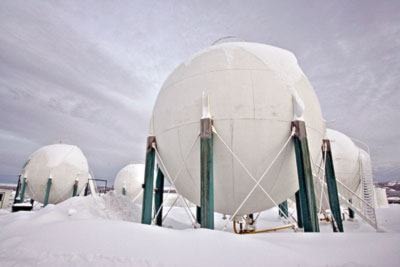However, if power users ran their dishwasher a little later, and dried their clothes at night, Yukon Energy may not have to burn diesel to supplement Whitehorse’s strained power grid.
At hours of peak demand, hydroelectric power from the Whitehorse Rapids dam is not enough, forcing the utility to fire up a series of diesel generators at Yukon Energy’s headquarters.
To educate users on better management of electricity usage, the energy corporation has posted a chart on its website plotting electricity demand at different points throughout the day, including the hours in which power must be supplemented by running the diesel generators.
“Our hope is that if people look at the chart and see that we are very close to burning diesel, they will think about how they can reduce their energy consumption during those peak times,” said Yukon Energy spokesperson Janet Patterson in a news release.
Diesel is typically burned at mealtimes, when ovens and other kitchen appliances are switched on across the city.
Power usage dips lowest between the hours of 1 a.m. and 7 a.m.
Yukon Energy suggested that users could opt for quick showers in the evening rather than hot baths, since hot water accounts for a substantial percentage of power used during peak periods.
Using a timer for car battery blankets or oil pan heaters is also a useful energy saving measure.
“All these little things add up in terms of cutting down on power use,” said Patterson in the release.
“Renewable power is a cornerstone of Yukon Energy’s operations; ideally we would like to not burn any diesel,” she said.
“While this chart is just one small step in that direction, we hope it will encourage people to think about how and when they use electricity. This not only helps Yukon Energy, but it will be good for people’s pocketbooks, too.”
To view the power usage chart go to www.yukonenergy.ca/customer/residential/chart/. (Tristin Hopper)
